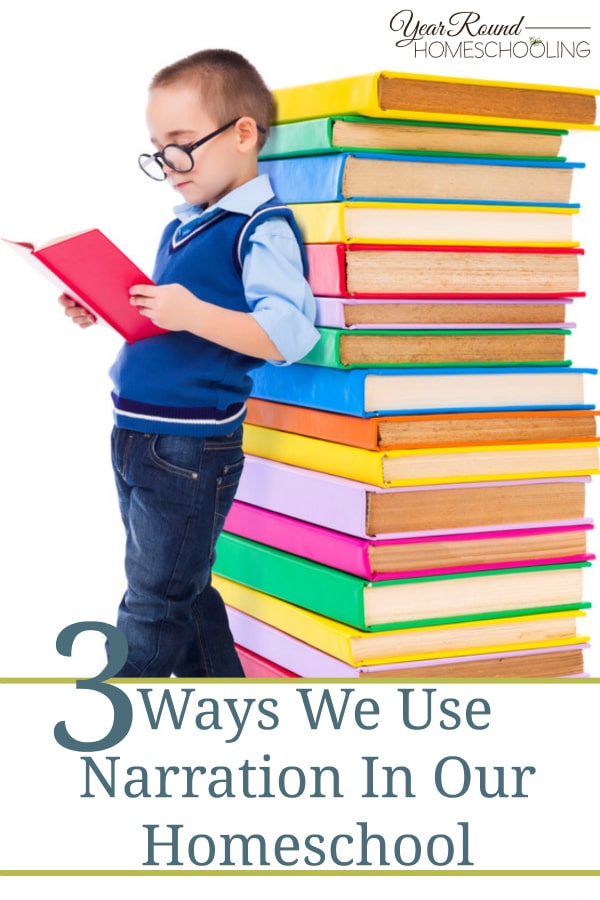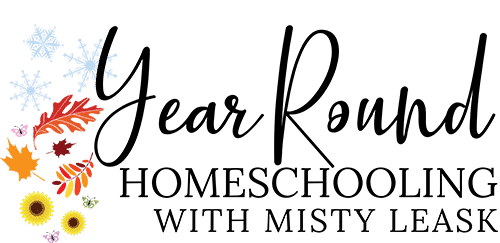If you follow the Charlotte Mason approach, I’m sure you’re aware of the four levels in reading/language arts: (1) reading aloud, (2) narration, (3) copywork, and (4) dictation. I like the word “level” because it doesn’t really stipulate an age but more so an order of skill. Even though narration is under the “language arts” subject it can be used across subjects (since there is reading in each one) to add to any new learning.
I’ll admit that I love all 4 of these approaches. Each of them has furthered my children’s learning in ways I could only dream before. However, narration may be my favorite because it’s so nice as a mom and teacher to hear my boys tell back what they have learned or read from their own point of view. Also, I can tell what they know and what they don’t very easily. This information helps me know what to review and what gaps need to be filled. It’s like the best “test” to give a student ever, in my opinion. I also can prompt my sons to help them share more or longer if I want more detail. Narration is also important to me because my boys can easily share with their father what they are learning each day and I can listen in to see what they know.

I’m sure there are many more but in our homeschool we like to use narrations in lieu of (1) traditional reading comprehension questions, (2) quizzes/tests and (3) written summaries/main ideas. I don’t think Miss Mason would have encouraged these methods anyways!
Narration Over Reading Comp Questions
This is probably the simplest of the three. Perhaps you’ve assigned your child a reading passage or they’ve chosen one of their own. Maybe, you’re using whatever the curriculum suggested. In either way, after your child is done reading, whether out loud or silently, ask them to narrate what they read. I like to remind my boys to keep the story in sequential order as best they can. There you have it! Meaningful time spent reading (sound literature, hopefully), narration (or a telling back) and me, as the teacher, knowing what they grasped (and what they didn’t)!
Narration Over Tests
You can see how the telling back after reading passages link to replacing tests. My top reason for choosing narrations over testing is what they both expose. Narration exposes what the child knows, giving them confidence and a sense of pride in their work and knowledge. Testing exposes what a child does NOT know, giving them confidence ONLY if the number wrong is not too large; otherwise there goes the confidence. Sometimes, and I have 1 child like this, not matter how small the number wrong is it bothers them. You know, the child that gets a 92% on a test and is kicking themselves for missing the other 8%. Oh, the anxiety (and deceit) a test brings believing we must (and thus able) achieve that 100% each time.
When I want to “test” my son’s understanding, I simply ask him to narrate. We up the ante a bit with him having to also answer any questions I have about the content that may have been lacking in his original response. The point is to ascertain what he knows and how well he knows it.
Written Narration Over Written Summaries
I’m going to have to praise my curriculum provider for implementing this approach into our weekly learning. Since I’m a former Language Arts teacher, I was already knowledgeable, thus comfortable, with teaching written narrations to my son, but Heart of Dakota offers amazing prompts and progressions whether you’re a newbie or an expert. Basically, the goal is to have your student write the “meat” of their oral narration in a sequential and smooth way while maintaining proper grammar and usage; but not workshopping them. The amount of sentences a child yields will vary with age and skill, but the point is to get them writing their narrations. I value written narrations over traditional summaries because students tend to not fear the blank, white space on their paper as they’re just recalling their own words. Additionally, written narrations help seal the information a bit more, because it’s personal, and it does not reduce their thoughts into the ‘beginning, middle, end’ categories.
I’d love to hear form YOU! How do you use narrations in your homeschool?
Check out different homeschooling methods by following our Pinterest board below.
Follow Misty Leask’s board Homeschool: Methods on Pinterest.

